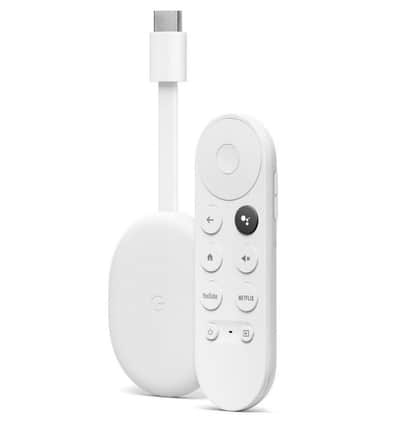Is Chromecast with Google TV a better buy than Roku or Amazon?


But eight years is a long time in technology. In 2013 the iPlayer was in its infancy, Netflix was still sending out DVDs in the post and “catch-up TV” meant recording programmes onto a hard disk or even a video cassette.
The changes since have made the original Chromecast something of an anachronism. Its model of using your phone as a combined remote control and video player was never copied by rivals like Apple, Roku and Amazon Fire, who instead released self-contained streaming sticks for around the same price. The Chromecast is awkward and cumbersome by comparison.
Advertisement
Hide AdAdvertisement
Hide AdBut the new model changes that. The £60 Chromecast with Google TV is a palm-sized device that contains everything you’d expect from a smart TV, minus the screen. Unlike its predecessor it has a dedicated remote control and its own menu system, which can pull in content from all the usual paid-for and free streaming services and play them in 4K ultra high-definition, assuming your TV is compatible. In other words, it behaves exactly like the similar products from Roku and Amazon.
It also has built-in voice recognition to save you the trouble of searching through different apps and menus. Asking it out loud to play last Tuesday’s Emmerdale should avoid the need to root through the ITV Hub.
The new Chromecast is also better integrated with the other Google services you probably use on your phone and PC. It’s ideal for watching YouTube on the big screen, and for projecting slideshows of pictures you’ve saved to Google Photos.
It’s not perfect, though. You can’t power it from a USB socket on the back of your TV, and the mains cable creates more clutter behind your TV. It’s also not always as fast as it could be, and you can’t always trust the voice assistant to find the cheapest option for watching a programme. Besides, Roku and Amazon’s rival products also have voice recognition and cost £10 less. But the Chromecast’s menu design and its integration with Google’s other services are unbeatable.
Advertisement
Hide AdAdvertisement
Hide AdThe intense competition for access to your TV is driving all kinds of special offers, and it may be the price that determines your final choice. Currently, for instance, Roku’s Premiere 4K streaming media player is only £25 – £5 less than the more basic version without 4K. But prices change by the day.
Competition also means that most of these sticks now allow access to the streaming services of rival companies. There are a few exceptions, though, so check before buying any model that it supports the apps you need. Britbox in particular runs on only a few platforms.
Which is the best stick? At around £100 more than its rivals, it’s hard to recommend the Apple TV streaming box to anyone other than die-hard iPhone enthusiasts – so that leaves Google, Amazon and Roku in the frame. There’s no doubt that the new Chromecast is finally a worthy competitor to the other two, and you can’t go far wrong with any of them. If you want the snazziest on-screen display, go for Google, but for all-round convenience, simplicity and versatility – and despite its dated menu design – my money is still on Roku. Other than 4K capability, functionality is similar across the range, so choose the model that offers the best value at the time.
Support The Yorkshire Post and become a subscriber today. Your subscription will help us to continue to bring quality news to the people of Yorkshire. In return, you’ll see fewer ads on site, get free access to our app and receive exclusive members-only offers. Click here to subscribe.
Comment Guidelines
National World encourages reader discussion on our stories. User feedback, insights and back-and-forth exchanges add a rich layer of context to reporting. Please review our Community Guidelines before commenting.